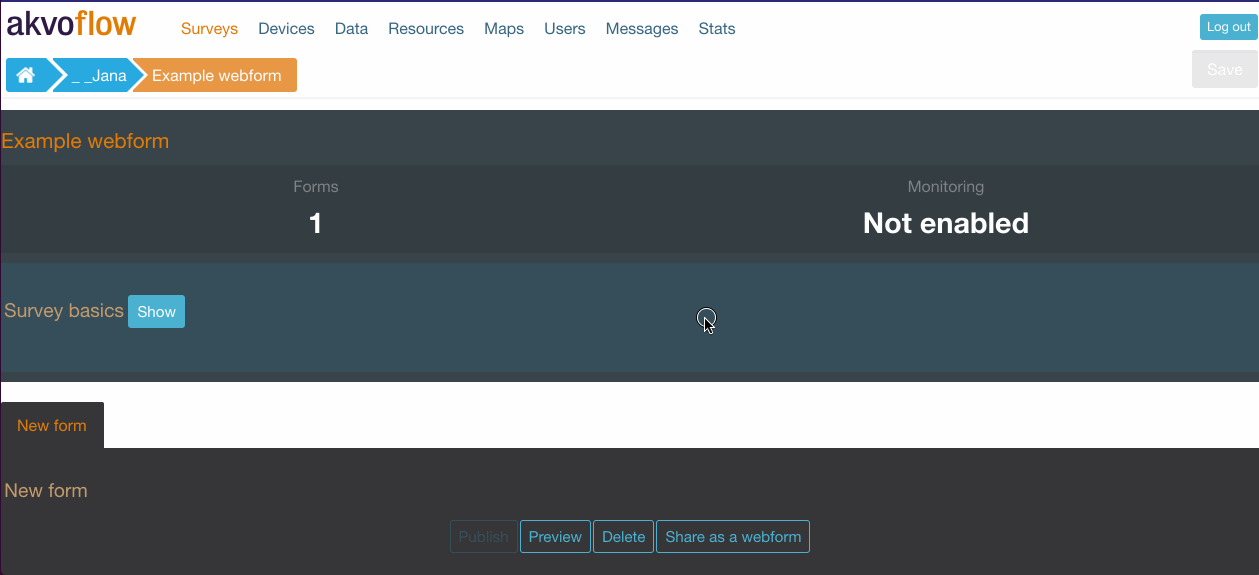Data is at the heart of tackling the COVID-19 crisis. In an era of social distancing, it’s also far more challenging to collect. This doesn’t just impact the COVID-19 response. Development programmes and projects around the world need to collect data to drive their decision making and ultimately contribute to impact. As a data for development organisation, we’re adjusting the way we work for every step of the data journey - Design, Capture, Understand and Act - and learning as we go.
For the capture phase, our first step was to develop a policy on field data collection. We follow the principle of “do no harm” - the wellbeing of our staff, partners, and the communities they work with is our number one priority. This meant that, in many cases, we and our partners could not continue to send out enumerators to capture data. As a response, we’ve been looking for innovative ways to capture data remotely using our digital platform.
In this blog, we’ve laid out the three key methods for remote data collection, and the pros, cons and best practices for each approach.
Phone based interviews
Many organisations are exploring the option of phone based rather than face to face interviews. We piloted this approach for Farmfit - a programme led by IDH to improve value chains for smallholder farmers. With enumerator-based data collection models disrupted, we fast tracked a short pilot to test the viability of the phone based interview model and to get an understanding of the process, requirements, and possible effects on the data quality. A small group of farmers were called by the enumerator and data entry was done by the enumerator directly on the existing Akvo Flow mobile application.
So what did we learn?
Pros:
- The phone based method provided comparable results to the face to face interviews which were conducted in January this year for the same programme. Overall, the data was of consistent quality.
- Based on the pilot, we expect the costs of this approach to be close to or slightly lower than an enumerator based model when rolled-out at larger scale. While travel and on-field coordination costs will be lower, costs for incentives and hardware would be higher.
- You can use the same tools as with field based interviews to register results. In this case, it was Akvo Flow, and meant that all question types and form types were supported, and the enumerator didn’t have to undergo any extra training to learn how to use a new tool.
Cons:
- You are reliant upon a stable mobile network and a database containing farmers’ phone numbers. These databases are not always present, or of high quality, which could result in data that isn’t representative.
- Questions that need observations in the field, or that are sensitive or private, can be impossible to verify or more difficult to ask over the phone.
- You might need two pieces of hardware - one phone to call and another device (in this case a phone with the Akvo Flow app) to capture the results.
Best practices:
- Ensure that you have prior contact between the enumerator and the respondents in order to provide context and seek consent for participation in the survey.
- Limit questions that need observations in the field and omit non critical questions - the shorter, the better. Consider splitting the survey into various shorter components.
- Consider providing incentives to the respondents who are giving their time to participate in the data collection.
Webforms

In Akvo Flow, we’ve just released a webforms feature which allows users to send a URL containing a survey to a respondent or an enumerator. The data that’s filled in is then fed directly into Akvo Flow. This solution could be used standalone, which would require the respondent to have access to the webform directly. Alternatively, an enumerator could conduct a phone based interview with a webform open on his computer to capture results - this would make data entry much easier than the previous method, as the enumerator would be able use the webform in a browser while calling the respondent.
Pros
- This model can work without enumerators, as you can have respondents directly answering the questions.
- Data can easily be crowdsourced and you can collect a lot of data with minimum resources.
Cons:
- People that fill in the survey need a device and an Internet connection as webforms are browser-based.
- Question types that require field presence (Caddisfly WQ tests and capturing geographic shapes) and those that require enumerator relation (signature) cannot be executed. You also can’t do continuous monitoring.
Best practices
- Ensure that there is a stable network to make the webform URL and password available.
- As there is no enumerator involved to check or verify the data, it’s advisable to insert quality check questions.
WhatsApp and USSD integration

Alongside Webforms, we’ve developed two technical proof of concepts for the integration of Akvo Flow with WhatsApp and USSD. Using these integrations, the respondent could receive and respond to questions sent in a WhatsApp message or USSD, which is similar to an SMS, and the data would be fed into Akvo Flow. This process is shown in the video above using dummy data.
For both processes, there is a need to engage with a third party. In the case of WhatsApp for Business, we’d require approval from Facebook to use the service. For USSD, we’d need to engage with a gateway provider to set up the USSD codes.
Pros
- As with webforms, you don’t need enumerators with this method. What’s more, for USSD integration respondents simply need a phone which supports SIM cards and a network signal, rather than a smartphone and an Internet connection.
- USSD can be useful for monitoring as you only need temporal data for monitoring and generally, registration may already provide the contact information. This contact information can be used for broadcasting the USSD code or WhatsApp contact.
- You can easily crowdsource data using these integration and two way communications can also be explored.
Cons
- This method is only suitable for relatively short surveys - around ten questions. There is no technical limitation, but long surveys aren’t recommended with these channels due to the user experience.
- Since third parties will be involved, a thorough examination of their security protocols will need to be undertaken.
- Not all question types are supported.
Best practices
- Due to the nature of messages, surveys should be kept as short as possible.
Nothing beats going out into the field with enumerators - you are able to connect, observe, and you can interview whoever you want, without needing a phone number. It’s the best way to ensure data quality. However, there are alternatives, and the best one for your programme depends on the context, the type of data you are working with, and access to existing data (for example phone numbers).
If you’re looking for ways to capture data remotely, get in touch with us and we’ll see how we can support you.
Other resources:
- Remote Survey Toolkit from 60 Decibels
- Best practices for conducting phone surveys from J-PAL
- Tips for collecting primary data in a COVID era from ODI


